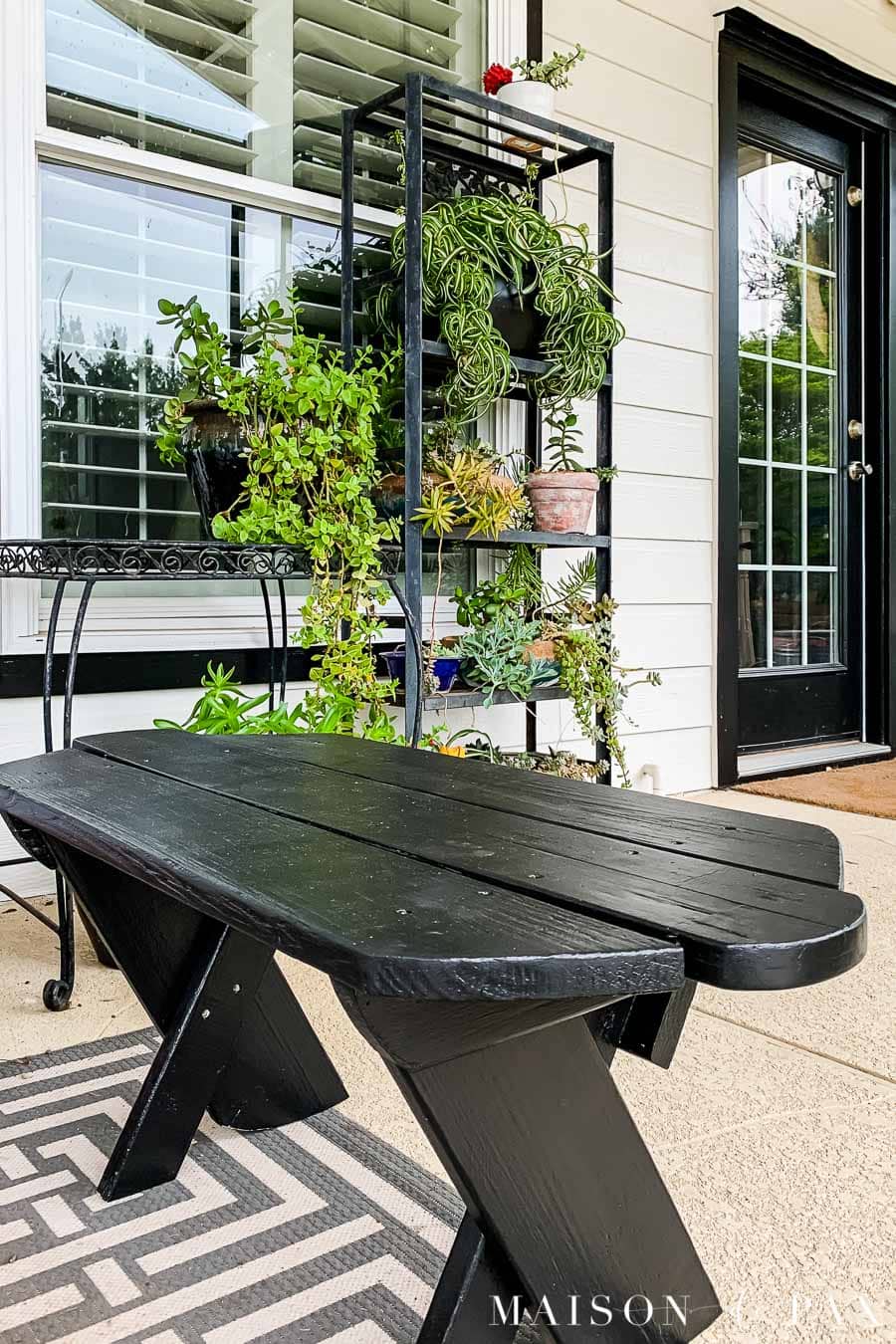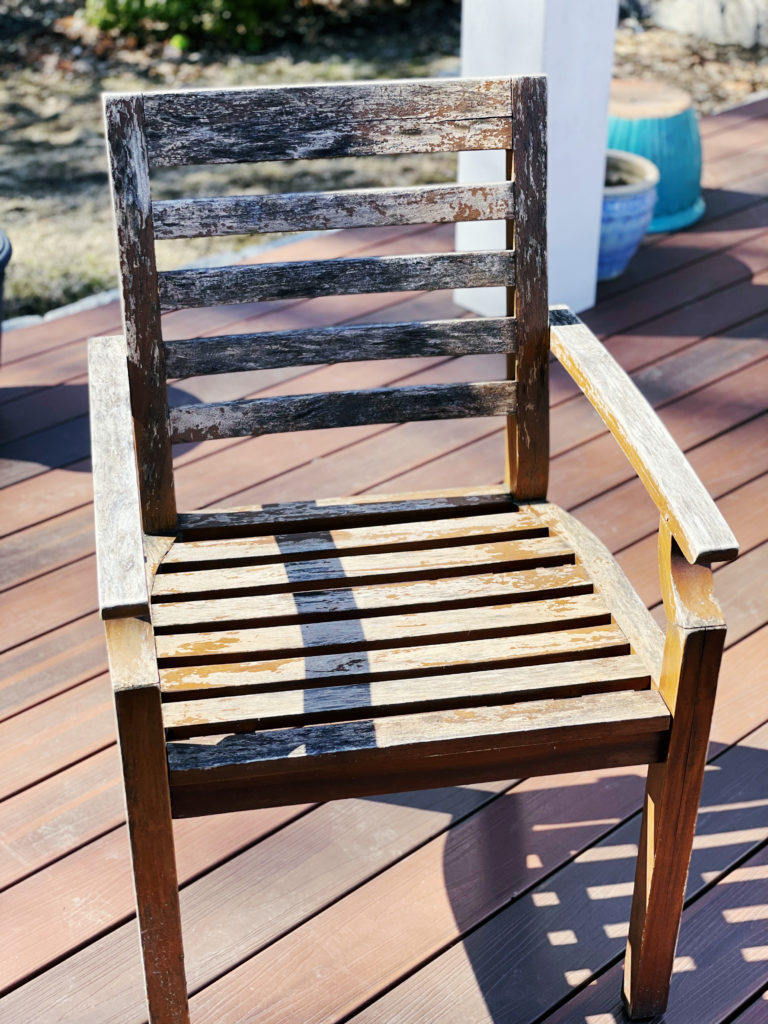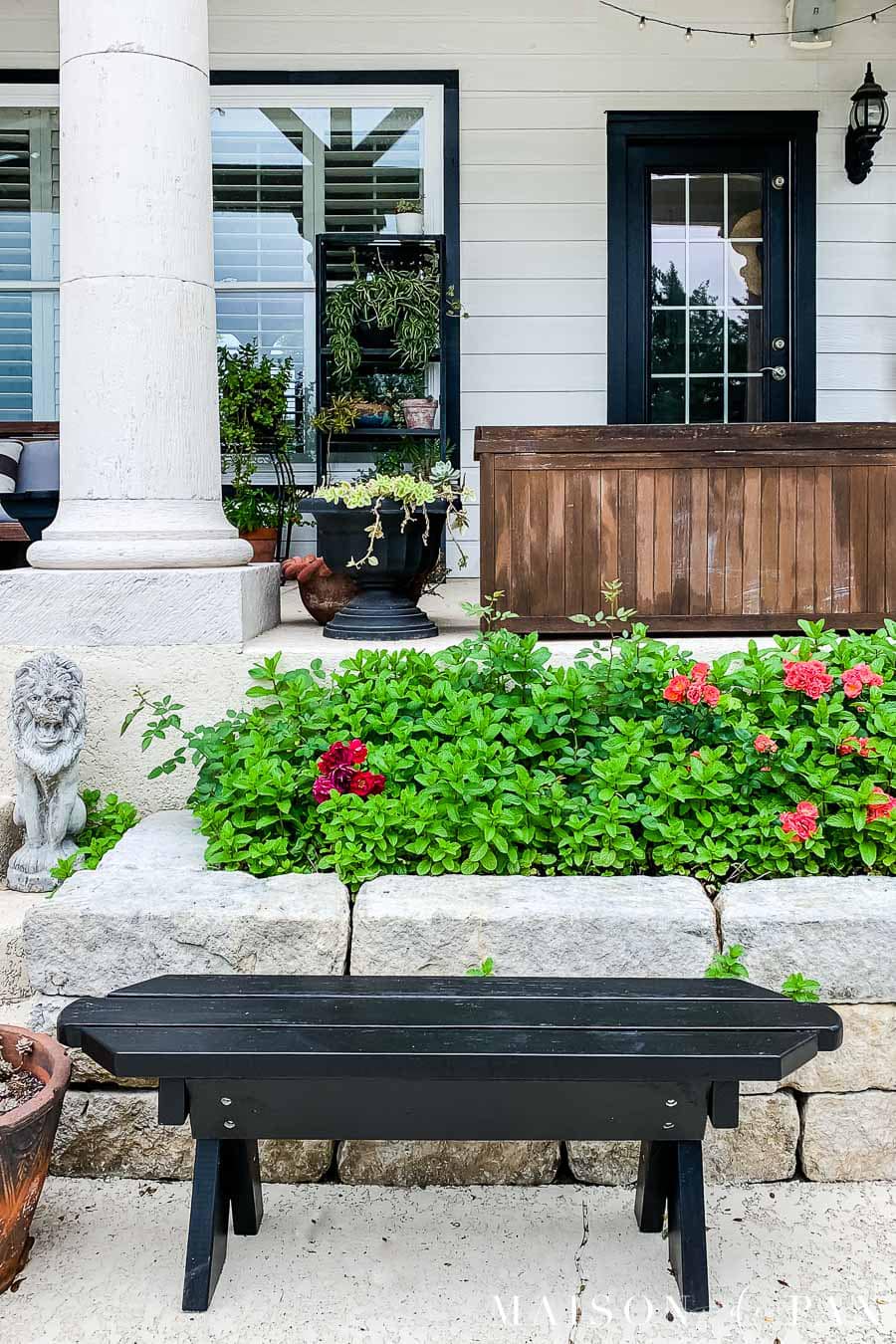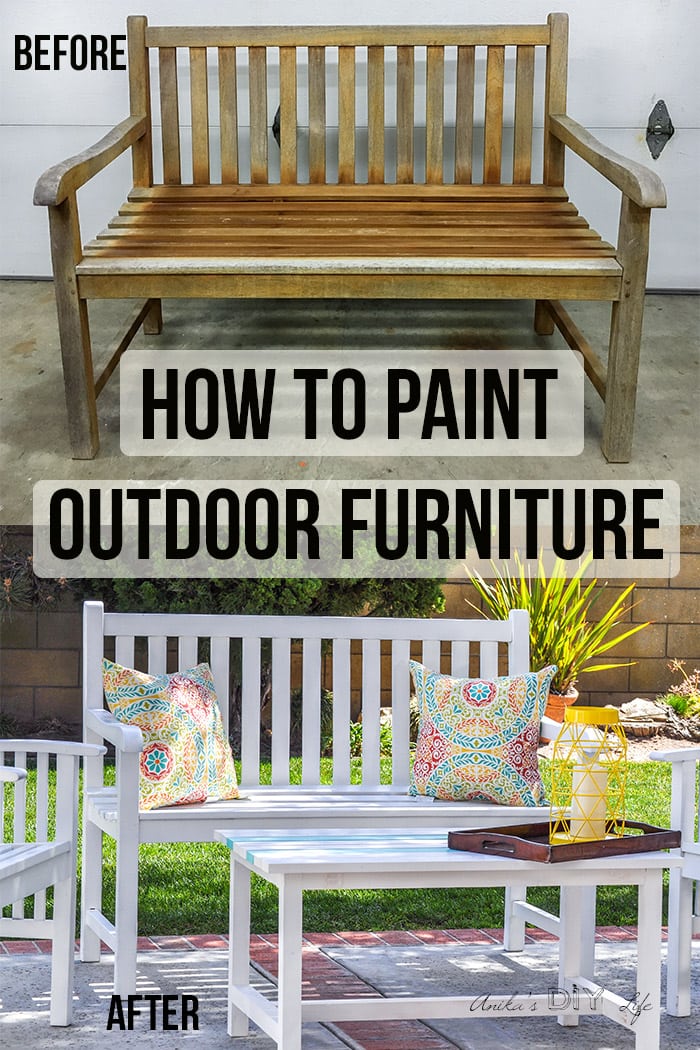Have you ever wondered what the best paint is for your outdoor wood furniture? Choosing the right paint can make a significant difference in how long your furniture lasts and how it withstands the changing weather conditions. Here's everything you need to know to ensure your outdoor wood furniture looks great and is protected for years to come.

This image is property of www.maisondepax.com.
Importance of Choosing the Right Paint
Outdoor wood furniture is constantly exposed to the elements – sun, rain, wind, and sometimes even snow. This exposure means that the wood can easily become damaged if not properly protected. Choosing the correct paint serves not just an aesthetic purpose but also a functional one. It guards the wood against moisture, UV rays, and other environmental factors that could lead to deterioration.
Protection from Elements
The primary reason for painting outdoor wood furniture is to shield it from adverse weather conditions. Quality paint acts as a sealant, preventing water from penetrating the wood, which can lead to rot and decay. Additionally, it can provide a barrier against insects and pests that might damage the wood.
Enhancing Appearance
While protection is vital, the appearance of your furniture also matters. The right paint can breathe new life into old pieces or match the furniture with your outdoor decor. Whether you prefer bright and bold colors or subtle and neutral tones, choosing the right paint will help you achieve the desired look.
Types of Paint for Outdoor Wood Furniture
When selecting paint for your outdoor wood furniture, it's essential to understand the different types available. Each type has its own set of properties, benefits, and drawbacks.
Oil-Based Paint
Oil-based paints are traditional options known for their durability and excellent coverage. They are particularly good for outdoor use because they form a hard, protective layer that can withstand harsh weather conditions.
Advantages:
- Highly durable and resistant to wear and tear.
- Provides a smooth, glossy finish.
- Excellent adhesion to wooden surfaces.
Disadvantages:
- Longer drying time compared to water-based paints.
- Strong odor and requires more ventilation during application.
- Difficult to clean up, as it requires turpentine or other solvents.
Water-Based Paint (Latex)
Water-based paints, also known as latex paints, are more modern options that have gained popularity due to their ease of use and quick drying time. They are also eco-friendlier compared to oil-based paints.
Advantages:
- Quick drying time.
- Low odor and easier to clean up with just soap and water.
- Flexible, preventing cracking and peeling in varying temperatures.
Disadvantages:
- May not be as durable as oil-based paints.
- Requires more coats to achieve the same level of coverage.
Acrylic Paint
Acrylic paints are a type of water-based paint with added acrylic resin, which increases their durability and flexibility. They are known for their excellent color retention and resistance to weathering.
Advantages:
- Excellent color retention.
- Resistant to cracking and peeling.
- Fast drying and easy to clean up.
Disadvantages:
- Can be more expensive than other types of paints.
- Requires a good primer for optimal adhesion.
Factors to Consider When Choosing Paint
Now that you know the types of paint available, there are a few factors you should consider to ensure you choose the best one for your outdoor wood furniture.
Climate and Weather Conditions
Your local climate plays a significant role in determining the best paint for your furniture. For instance, if you live in a region with high humidity levels, mildew-resistant paint is a must. Similarly, areas with intense sunlight will require UV-resistant paint to prevent fading.
Type of Wood
Different types of wood have different properties, and some may require specific types of paint. For example, hardwoods like teak and mahogany are dense and may need a paint that offers better adhesion. Softwoods like pine and cedar might need a more flexible paint to avoid cracking.
Desired Finish
The look you want to achieve also affects your paint choice. Do you prefer a glossy, satin, or matte finish? Glossy paints generally offer better protection and are easier to clean, but they may show imperfections more easily. Matte finishes, on the other hand, provide a more understated look that's great for hiding minor flaws.
Ease of Application
Some paints are easier to apply than others. If you're a DIY enthusiast, you might want a paint that's user-friendly and doesn't require professional tools or skills. Conversely, if you're hiring a professional, the ease of application might be less of a concern.
Preparation Before Painting
Preparation is crucial for ensuring the paint adheres well and provides long-lasting protection. Proper preparation involves several steps, from cleaning to priming the wood.
Cleaning the Wood
Before you start painting, it's essential to clean the wood thoroughly. Dirt, grease, and old paint can prevent the new paint from sticking properly. Use a mixture of water and mild detergent to scrub the surface, then rinse it off and let it dry completely.
Cleaning Tips:
- Use a soft brush for scrubbing to avoid damaging the wood.
- For stubborn stains, consider using a specialized wood cleaner.
- Ensure the wood is fully dry before proceeding to the next step.
Sanding
Sanding helps to create a smooth surface for the paint to adhere to and removes any old paint or varnish. Start with coarse-grit sandpaper to remove rough patches and then move to finer grit for a smooth finish.
Sanding Tips:
- Always sand in the direction of the wood grain to avoid scratches.
- Use a sanding block or an electric sander for larger surfaces.
- Wipe away dust with a tack cloth after sanding.
Applying Primer
Primer is essential for enhancing paint adhesion and providing a uniform base for the topcoat. Choose a primer that is suitable for outdoor wood and the type of paint you plan to use.
Priming Tips:
- Apply a thin, even coat of primer with a brush or roller.
- Allow the primer to dry completely before applying the paint.
- For woods with high tannin content like cedar and redwood, use a stain-blocking primer.

This image is property of whitneysowles.com.
Painting Techniques
Once your wood is prepped and primed, it's time to apply the paint. The technique you use can affect the final appearance and durability of the paint job.
Brushing
Using a brush gives you more control and allows you to cover intricate details. It's a good option for smaller pieces or areas with a lot of detail.
Brushing Tips:
- Use a high-quality brush designed for the type of paint you're using.
- Apply the paint in thin, even layers to avoid drips and runs.
- Brush in the direction of the wood grain for a smoother finish.
Rolling
Rollers are great for covering large, flat surfaces quickly. They provide a more uniform finish and can save you a considerable amount of time.
Rolling Tips:
- Use a roller with a nap that suits the texture of your wood.
- Apply the paint with light pressure to avoid roller marks.
- Go over rolled areas with a brush for a more refined finish, if necessary.
Spraying
Spraying is the fastest method and can produce a smooth, even coat. It's ideal for large pieces and outdoor settings where over-spray won't be an issue.
Spraying Tips:
- Use a paint sprayer that is suitable for the type of paint you're using.
- Make several light passes rather than one heavy coat to avoid drips.
- Wear protective gear to avoid inhaling fumes and getting paint on your skin.
Top Paint Brands for Outdoor Wood Furniture
Several brands have established themselves as leaders in the market for outdoor wood paint. Knowing which brands to trust can help you make a more informed decision.
Behr
Behr is a well-known name in the paint industry, offering a range of products that are excellent for outdoor use. Their Premium Plus Exterior paint is particularly popular for its durability and weather resistance.
Features:
- UV-resistant to prevent fading.
- Offers mildew resistance.
- Provides a variety of finishes from gloss to matte.
Sherwin-Williams
Sherwin-Williams is another reputable brand offering high-quality paints suitable for outdoor wood furniture. Their SuperPaint Exterior Acrylic Latex is a standout product known for its long-lasting finish.
Features:
- Resists peeling and blistering.
- Available in numerous colors and finishes.
- Easy to apply with excellent adhesion.
Rust-Oleum
Rust-Oleum is famous for its protective coatings and paints that offer excellent durability. Their Painter’s Touch Ultra Cover is a versatile option that works well on wood surfaces.
Features:
- Fast-drying formula.
- Provides excellent coverage and adhesion.
- Resistant to chipping and fading.

This image is property of www.maisondepax.com.
Common Mistakes to Avoid
Even with the right paint and preparation, there are a few common mistakes that can compromise your paint job's quality and longevity. Being aware of these can help you avoid them.
Skipping Sanding or Priming
One of the biggest mistakes is neglecting the sanding or priming steps. These processes are crucial for ensuring that the paint adheres properly and lasts long.
Tip to Avoid:
- Always sand and prime the wood, regardless of its condition.
Applying Thick Coats
While it might be tempting to apply thick coats to speed up the process, this can lead to drips, uneven drying, and more frequent touch-ups.
Tip to Avoid:
- Apply multiple thin coats, allowing each to dry completely before adding the next.
Ignoring Weather Conditions
Painting under unfavorable weather conditions, such as high humidity or extreme temperatures, can affect the paint's drying time and adhesion.
Tip to Avoid:
- Check the weather forecast and choose a day with mild, dry conditions for painting.
Maintenance Tips for Painted Outdoor Wood Furniture
Once you’ve completed your painting project, ongoing maintenance is essential to keep your outdoor wood furniture looking its best. Proper care can extend the life of both the paint and the wood.
Regular Cleaning
Dust, dirt, and grime can accumulate on your outdoor furniture, affecting its appearance and condition. Regular cleaning helps to maintain the paint's integrity.
Cleaning Tips:
- Use a soft cloth or sponge with mild detergent and water.
- Avoid harsh chemicals that can damage the paint.
- Rinse thoroughly and let it dry completely.
Touch-Up and Repairs
Over time, even the best paint can show signs of wear and tear, such as chipping or fading. Periodic touch-ups can help maintain the furniture's appearance and protection.
Touch-Up Tips:
- Keep a small amount of the original paint for touch-ups.
- Sand the affected area lightly before applying the paint.
- Apply a thin coat and blend it smoothly with the surrounding area.
Protective Covers
Using protective covers when your furniture is not in use can significantly reduce wear and tear from the elements. Covers can protect against UV rays, moisture, and debris.
Covering Tips:
- Choose covers that are breathable to prevent mold and mildew.
- Ensure the covers fit well to avoid trapping moisture.
- Remove the covers regularly to inspect and clean the furniture.
Inspect for Damage
Regularly inspecting your outdoor furniture for signs of damage can help you catch and address issues early, preventing more severe problems down the line.
Inspection Tips:
- Look for cracks, chips, or peeling paint.
- Check for signs of mold or mildew.
- Repair any damage promptly to avoid further deterioration.

This image is property of whitneysowles.com.
Eco-Friendly Paint Options
If you’re concerned about the environmental impact of your painting project, consider eco-friendly paint options. These paints have fewer harmful chemicals and are generally better for both your health and the environment.
Low-VOC and No-VOC Paints
Volatile Organic Compounds (VOCs) are chemicals that can be released into the air as the paint dries, contributing to pollution and health issues. Low-VOC and no-VOC paints offer a more environmentally friendly alternative.
Benefits:
- Fewer harmful emissions.
- Less odor during application and drying.
- Safer for indoor and outdoor use.
Natural Paints
Natural paints are made from ingredients like plant oils, clay, and natural pigments. While they may be less common, they provide a viable eco-friendly option for those looking to minimize their environmental footprint.
Benefits:
- Made from renewable resources.
- Biodegradable and non-toxic.
- Safe for you and the environment.
Frequently Asked Questions (FAQs)
To help you make the best choice and guide you through your paint project, here are some common questions and their answers.
How Many Coats of Paint Are Needed?
Generally, two to three coats of paint are recommended for outdoor wood furniture. This ensures adequate coverage and protection. Always allow each coat to dry completely before applying the next.
Can I Use Indoor Paint for Outdoor Furniture?
Indoor paint is not formulated to withstand the harsh conditions of outdoor environments. Using it can result in faster wear and damage. It’s best to use paint specifically designed for outdoor use.
Do I Need to Sand Between Coats?
Lightly sanding between coats helps to create a smoother finish and improve adhesion. Use fine-grit sandpaper and wipe away any dust before applying the next coat.
How Long Will the Paint Last?
The longevity of your paint job depends on several factors, including the type of paint used, local weather conditions, and how well the furniture is maintained. On average, a good-quality outdoor paint job should last between three to five years.

This image is property of www.anikasdiylife.com.
Conclusion
Choosing the best paint for your outdoor wood furniture is not just about picking a color. It's a decision that involves understanding the types of paint available, considering factors like climate and wood type, and following proper preparation and painting techniques. By taking the time to select the right paint and applying it correctly, you'll ensure that your outdoor wood furniture remains beautiful and protected for years to come.









